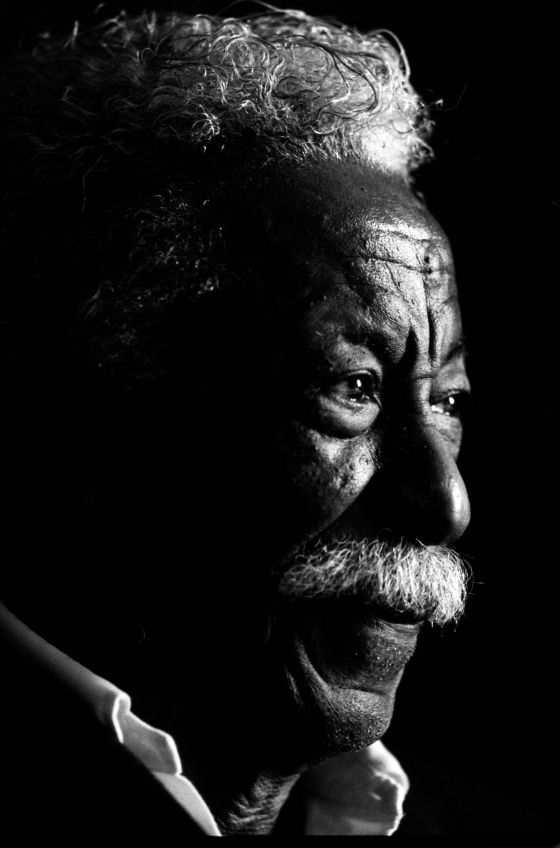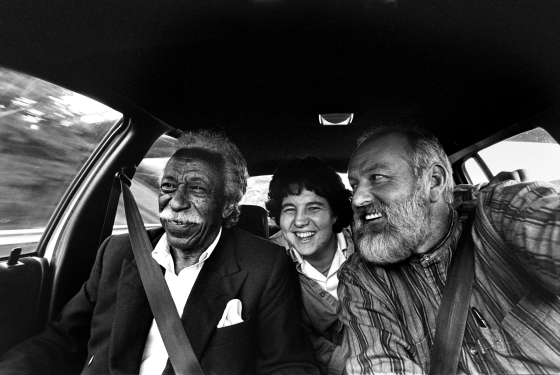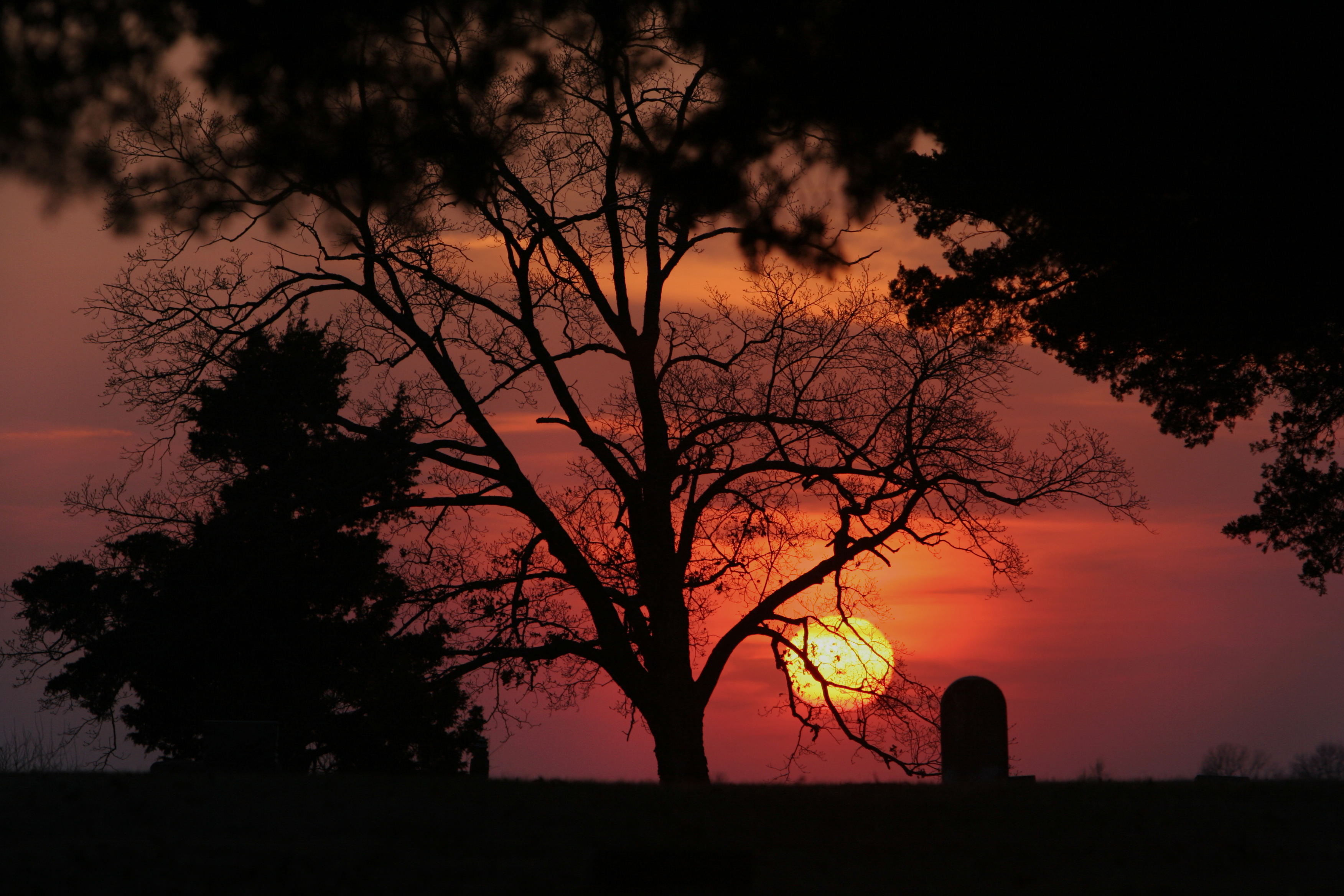by David LaBelle
One of the bonuses of my profession has been brief encounters with famous people.
My son Tucker, who had accepted an offer to play lacrosse in West Virginia, went through a spell where he played John Denver’s Country Roads nonstop. He asked if I had photographed the famous singer.
“Yes, I did,” I answered. “Matter of fact, I spent two days following him during a trip to Utah rehearsing with the Mormon Tabernacle Choir in 1981.” I can still recall a conversation we had about creationism versus evolution while the two of us sat alone on the steps of Utah State University in Logan. Contrary to the “country boy” image, Denver was a deep thinker, a philosopher. It broke my heart when he died in the crash of his small plane years later along the California coast.
Another celebrity who has been on my mind this week is the late Gordon Parks. I met Parks in 1996 when he spoke at Western Kentucky University.

Gordon Parks, 1996 @ David LaBelle
I was familiar with Park’s work with the Farm Security Administration and his book The Learning Tree, which he later directed as a movie with the same name. I knew he was the first African-American staff photographer to work for Life Magazine.
The ride to the airport
I volunteered to drive Parks to the Nashville airport after his lecture and luncheon. One of my students, Kim Hughes, a big fan of the legendary photographer, joined us.
A few miles out of town I shared my disappointment, even embarrassment for the lunch the school served. It is my habit to eat whatever is put in front of me but I couldn’t choke down that meal. Parks admitted he couldn’t eat his lunch either. A true gentleman, he wasn’t about to complain.
“How about we pull off the interstate in Franklin and go get us something to eat at McDonald’s,” I offered.
“I’d like that,” he eagerly agreed. “I am pretty hungry.”
It’s not every day you get to take a true Renaissance Man to McDonald’s for lunch. I was giddy.

Driving with one hand and shooting a picture with the other, a nervous Parks asked if I always make pictures while I am driving.
It struck me, as we sat eating lunch together at McDonalds, how much times had changed since Park’s segregated childhood in Fort Scott, Kansas. If any of those serving us that afternoon had any idea who this man was and what he endured and accomplished, they likely would have lined up to shake his hand.
Some things are impossible to comprehend
I will never know the fear, anger, violent discrimination and frustration Parks endured because of the dark skin clothing his spirit, the skin he was born in. Try as I might to imagine it, I cannot put on black skin.
But I can recall the fiery hatred I saw burning in the eyes of grown men and women dressed in white robes and pointed hoods while covering Klan rallies in the South. I can still smell the obscene scent of racism filling my nostrils and cutting my heart, and the tension while moving past teenagers brandishing automatic rifles across their chest, charged with guarding the entrance to a meeting spot. “I smell a journalist and a Jew,” one of them growled as a Jewish reporter and I worked our way into the gathering.
I also remember the numbing fear of covering summer race riots in California and realizing enraged, irrational mobs were bent on killing me because of the color of my white skin and perceived privileged occupation. I watched and photographed with disbelief as angry rioters tried to kill those they perceived different than themselves. Those were dangerous times when I feared both the mobs and the police.
Yet, even those temporary fears are nothing compared to the continual, oppressive pain experienced and endured by Parks and so many others of his color and generation.
It’s hard to imagine a dozen winters have passed since making a long, overnight drive from Lexington, Kentucky to Fort Scott, Kansas to attend Gordon Park’s funeral.

Sunset over the Fort Scott, Kansas cemetery where Parks was buried earlier in the day. © David LaBelle
Why think of Parks now?
I have a delightful and talented photojournalism student from Chicago, an amiable young man whose infectious smile belies deep thoughts swirling within. He recently shared with our class his dream of creating images showing black people in a positive light, instead of the many published pictures of people fighting, addicted to drugs or being arrested.
At 21 years of age, Jermaine Jackson is four years younger than Parks was when he bought his first camera.
Moved by his presentation, I asked Jermaine to expound on the thoughts and pictures he shared in class.

Jermaine Jackson
“Since my youth, I’ve always seen award winning photos that contained a person of color suffering. The earliest one I remember is the one with child with the vulture in the background waiting on the child to die. Being from Chicago, all the media show is black people showing grief and trauma. A few years ago, the Chicago Sun-Times photos of the year included a photo of a mother crying over her dead child. How many times have we seen that? The positives are rarely shown. That has inspired me to attempt to change the narrative by photographing people of color in a positive light, via celebration or any other time their suffering is not being exploited.”
Gordon Parks was a true Renaissance Man – Photographer, Songwriter, Pianist, Writer, Director, Composer and Filmmaker. And he wore his celebrity with quiet poise and grace.
That he chose the camera and words as weapons of choice over his fists to fight prejudice, continues to impress and inspire.
I hope Jermaine follows a similar path. Given his creative eye and infectious personality, the chances are good.
And may we all learn true love is colorblind.
That is so cool! Great story! Thanks for sharing.
Sent from my iPad
>
Well said. God bless Jermaine in his quest. I think we all could learn a lot from Gordon Parks too. He was an amazing photographer but even more amazing all around human.
Gordon Parks, one of my photographic heroes…..many thanks for this.
I remember Gordon Parks’ visit to Western. He held people in awe. Great story, Dave.
It was insightful – thoughtfully written, almost poetic.
I love this piece. It was a day-maker for me. I wish Mr. Johnson all the best in his career. Sounds like he’s already on a really good path.
Pingback: Seeing Color in the Positive | Visual Journalism
I too remember reading “The Learning Tree” by Gordon Parks, but never knew he was a photographer, too. That was a life-changing book which help direct my readings in college and thereafter. Coming from a small island in Alaska which got Canadian TV (if any), I knew nothing at 18 about any of the Civil Rights problems, marches, Dr. King, or any of that. So I avidly read and learned. As a teacher of many children of color and others with very diverse backgrounds, like many of my students, I am sure Jermaine will soar and change the world. He’s right. Chicago, and America need to hear a different and more positive story, full of strength.
Thanks again so much, Dave!
Gosh, thank you Sharon. Great story.